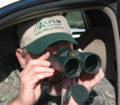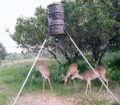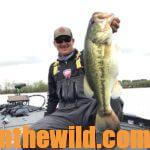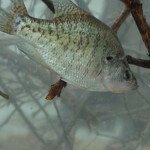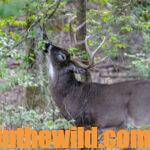Editor’s Note: If you saw your cousin, your brother, your sister, your uncle and your aunt get run over by an 18-wheeler every time one of them tried to cross a six-lane interstate, then you probably wouldn’t attempt to cross that interstate yourself. Just like you’d learn not to play in traffic from observing what happened to your family on the interstate, older bucks with large racks and heavy body weights learned at an early age that if they went into a green field during hunting season in the daytime, more than likely they never would leave the green field. But most hunters plant green fields to grow bigger bucks and think they’ll bag them at the green fields. Here’s the reality –the mature bucks will become nocturnal first. Because younger bucks haven’t learned the danger that awaits them in the green fields, hunters who sit in shooting houses over green fields have noticed they generally take smaller, younger bucks than hunters do in stands 50- to 200-yards away from those green fields. Now scientific evidence proves the truth of this assumption.
 Wildlife biologist and researcher Dr. Grant Woods believes that to take bucks feeding on green fields at night and not during daylight hours you need to create hidey-hole hunting spots at least 100-yards away from green fields and 4-wheeler trails, beginning two weeks before bow deer season. Woods defines a hidey hole as a small patch of green forage where a deer can get several mouths full of food before he moves onto the major green fields or stop offs there after he’s had dinner at the green field for some dessert.
Wildlife biologist and researcher Dr. Grant Woods believes that to take bucks feeding on green fields at night and not during daylight hours you need to create hidey-hole hunting spots at least 100-yards away from green fields and 4-wheeler trails, beginning two weeks before bow deer season. Woods defines a hidey hole as a small patch of green forage where a deer can get several mouths full of food before he moves onto the major green fields or stop offs there after he’s had dinner at the green field for some dessert.
To create a hidey hole, Woods uses a backpack leaf blower to clear the litter off the forest floor. However, a rake also can accomplish the same task. “Using my leaf blower, I’ll blow out a spot, about 20×20 feet, where I find sunlight hitting the forest floor,” Woods reports. “I’ll take 10-10-10 fertilizer and sow it over the cleared-out spot. Next I’ll sow winter wheat, buck wheat, peas or any seeds that will germinate on top of the soil and produce a crop quickly, after the first rain.”
 Including the fertilizer and the seed, you’ll only have about $20 and 45 minutes of sweat equity invested in each hidey-hole hunting place you create. Always try to plant your hidey-hole green fields where your hunting buddies won’t find them. Think about how many hidey-hole food plots you can create, if you make one of these small food plots every time you go into the woods to scout or hunt. If you only hunt each hidey hole once or twice a season, you’ll have a good chance of taking a really-nice buck near these mini green fields. You can create these hidey holes up until two weeks before the first frost.
Including the fertilizer and the seed, you’ll only have about $20 and 45 minutes of sweat equity invested in each hidey-hole hunting place you create. Always try to plant your hidey-hole green fields where your hunting buddies won’t find them. Think about how many hidey-hole food plots you can create, if you make one of these small food plots every time you go into the woods to scout or hunt. If you only hunt each hidey hole once or twice a season, you’ll have a good chance of taking a really-nice buck near these mini green fields. You can create these hidey holes up until two weeks before the first frost.
While everyone else hunts the major green fields where the older-age-class bucks won’t go during daylight hours, you can hunt hidey-hole green fields where you’ll probably have nice bucks showing up early in the morning and/or late in the afternoon as they go to and from the green fields.
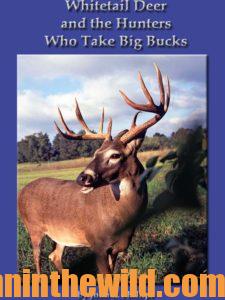 To learn more about deer hunting, check out John E. Phillips’ book, “Whitetail Deer and the Hunters Who Take Big Bucks,” https://www.amazon.com/Whitetail-Deer-Hunters-Take-Bucks/dp/1537572245 available in Kindle and print versions.
To learn more about deer hunting, check out John E. Phillips’ book, “Whitetail Deer and the Hunters Who Take Big Bucks,” https://www.amazon.com/Whitetail-Deer-Hunters-Take-Bucks/dp/1537572245 available in Kindle and print versions.

